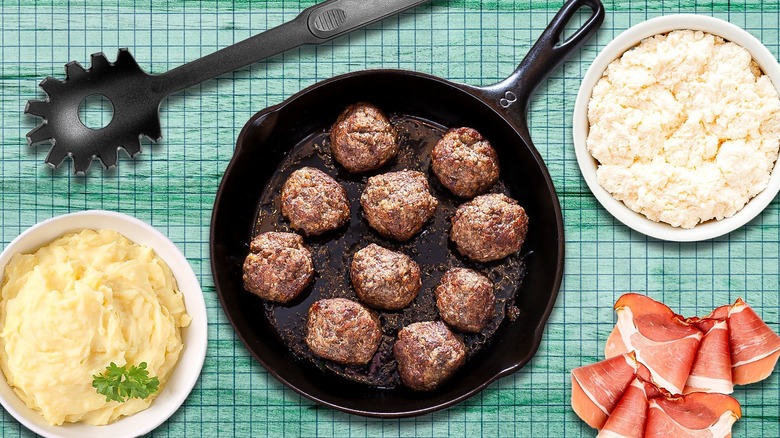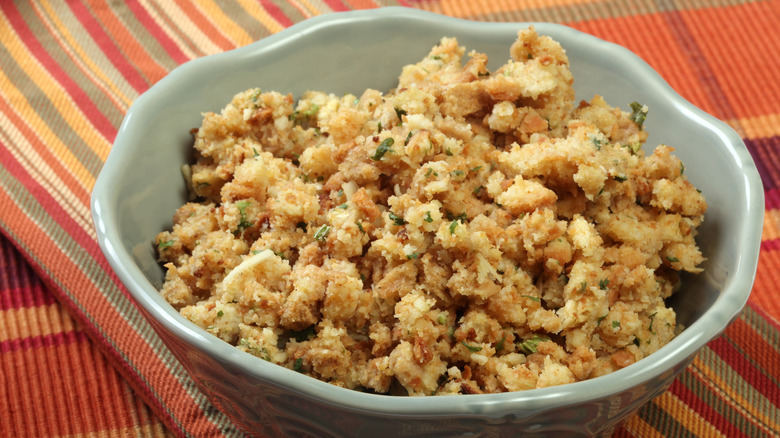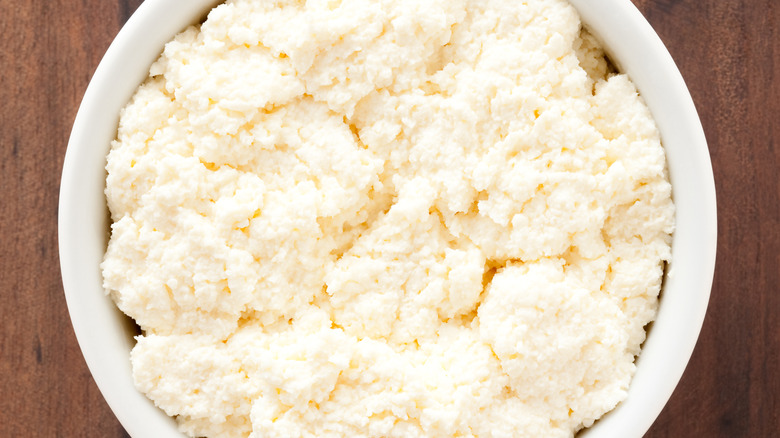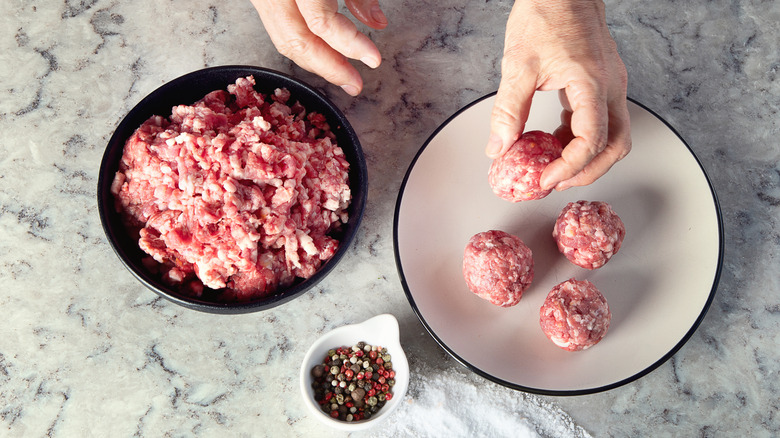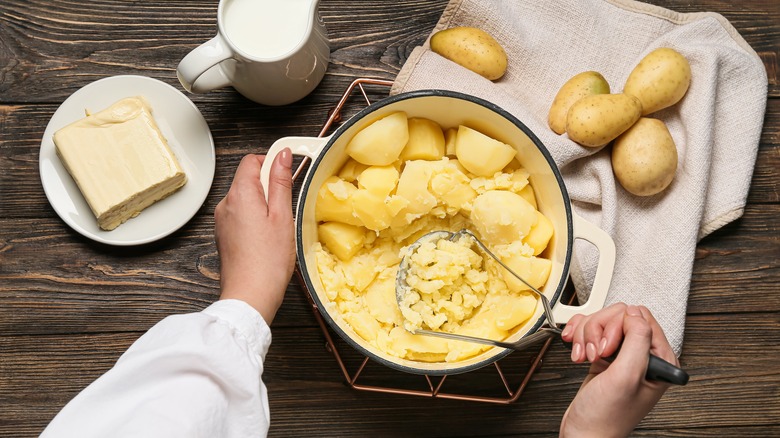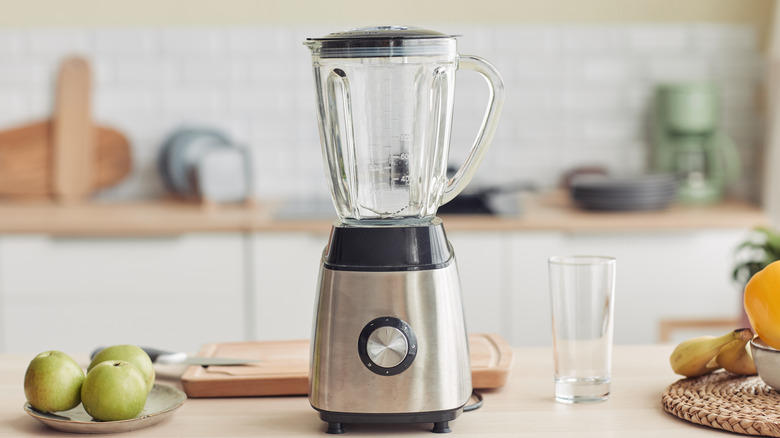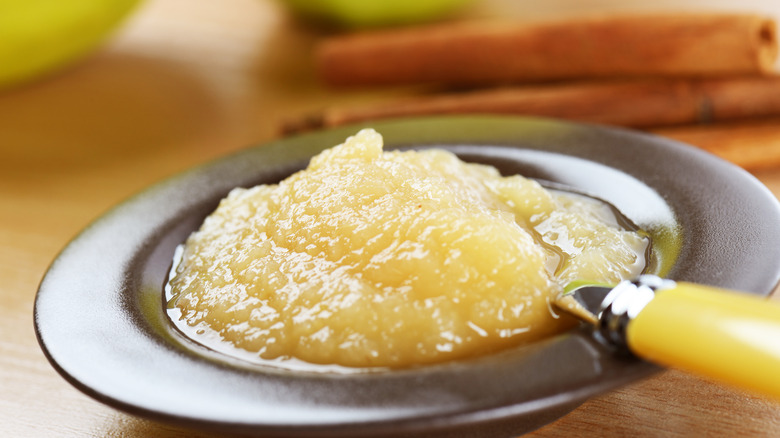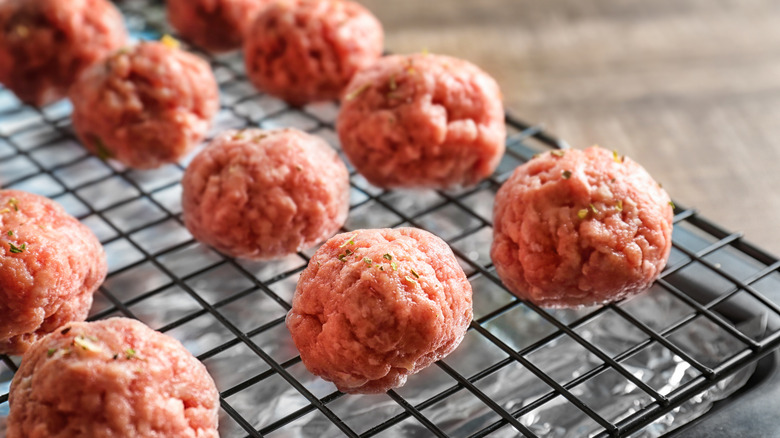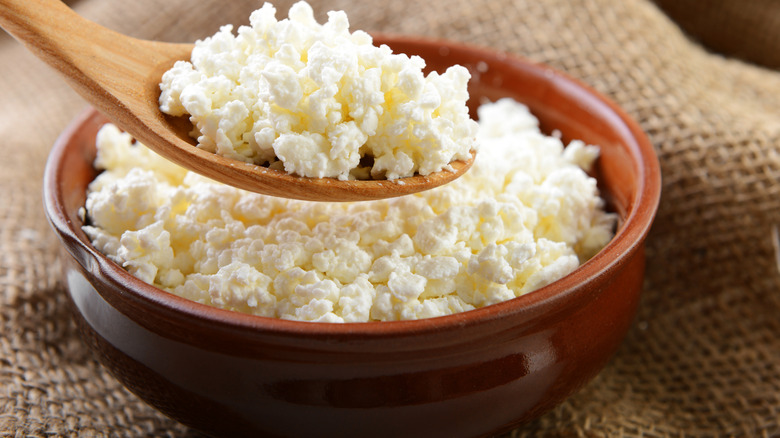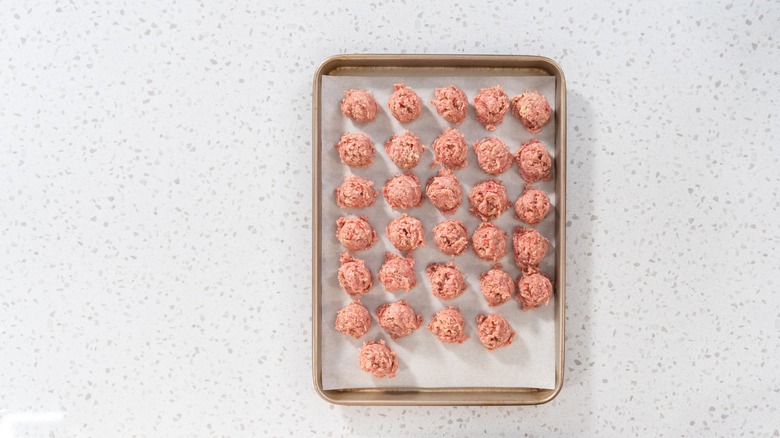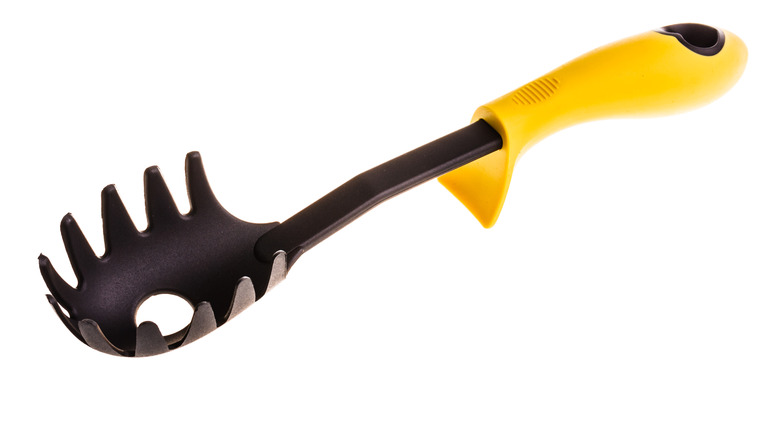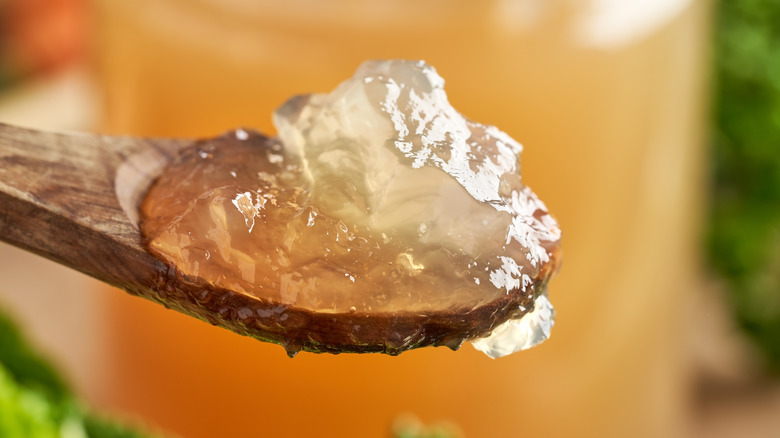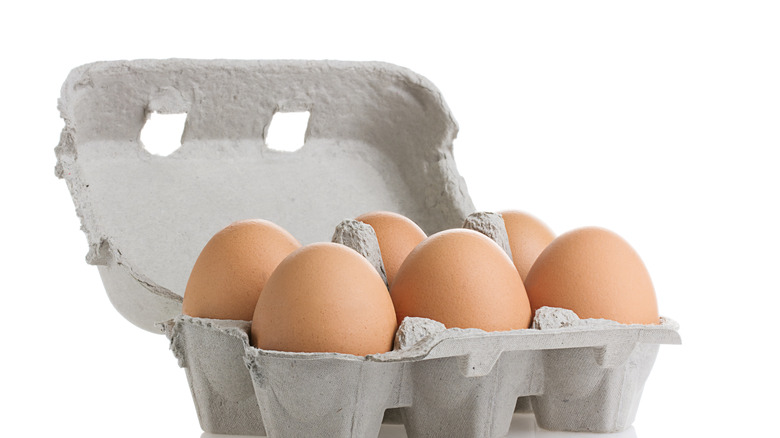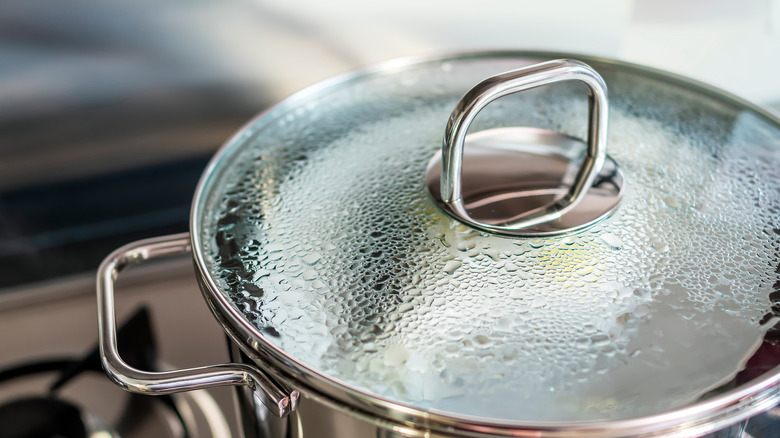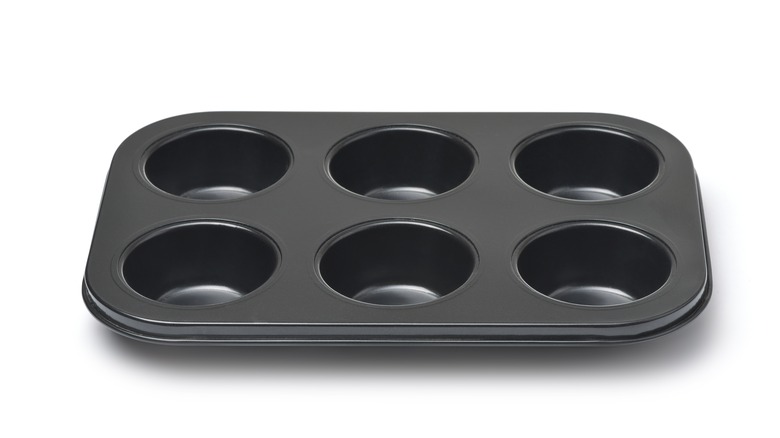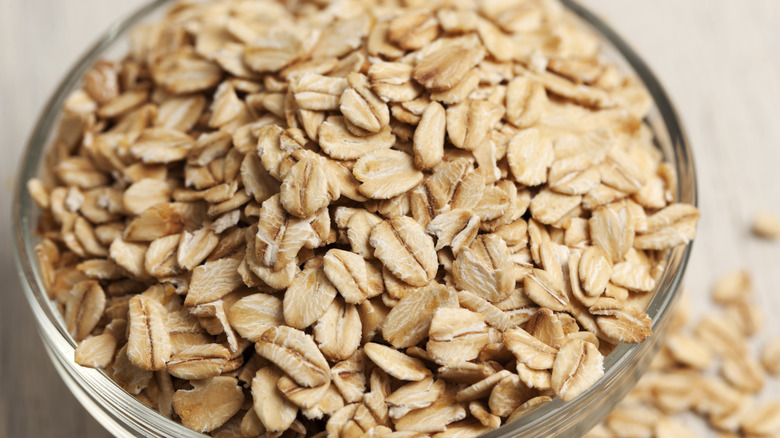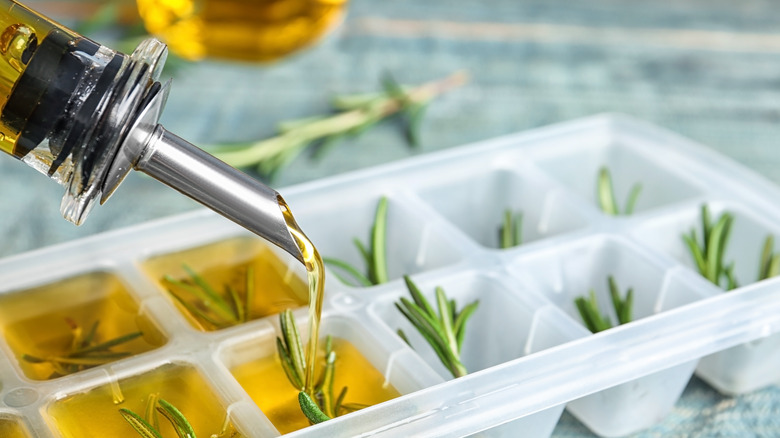23 Hacks For Better Homemade Meatballs
"On top of spaghetti, all covered in cheese..." We'll save the rest of the song for you to ponder, but the food remains at the forefront of our minds: meatballs. These protein-packed spheres made with ground meat, flavorful herbs and veggies, and binders like breadcrumbs and eggs are a quintessential part of a Sunday night pasta dinner, decadent grinder sandwich dripping in melted mozzarella, or a quick dinner idea from the frozen aisle at the grocery store. We love a good meatball ourselves, especially one that is brimming with moisture, flavor, and texture, and strive to find ways to make consistently good ones at home — just like our grandma used to make.
Meatballs are deceptively easy to whip up in your kitchen and are prone to mistakes like overmixing, lacking binders, or using meat that's too lean. But, we're here to solve all of your meatball woes and recommend helpful hacks to help you make delicious meatballs at home.
Use your broiler for the perfect meatball crust
The key to making the perfect meatball is to capture many different textures, including a soft, moist inside and crispy crust that doesn't soak up the sauce surrounding it. If you want faster meatballs with a crispy crust, don't turn on the stovetop — use your broiler instead. Broiling your meatballs will only take about 10 minutes, compared to upwards of 20 on your stovetop, and it will ensure the outside of the protein gets perfectly crunchy while the inside stays soft.
Another benefit of using your broiler to finish off your meatballs is that the heat will distribute the fat throughout the meat, which reduces the need to add extra oil to the pan. The best vessel for these meatballs is a broiler pan since it allows for air to flow under the meatballs, but you can also opt for a pre-seasoned cast iron skillet in a pinch.
Swap breadcrumbs for stuffing for better flavor
The go-to for most meatball recipes is breadcrumbs — either homemade from leftover stale slices or from a canister. But instead of using breadcrumbs, reach for stuffing mix. Not only will you get the same dried bread addition to help soak up the fat and flavor from your meat as it cooks, but most stuffing mixes are also seasoned with herbs and dried veggies to add extra flavor.
You can use leftover pre-made stuffing for your meatballs rather than just the mix. Moisten the fresh stuffing with about two tablespoons of water per cup. For dried box mixes, you'll need to add a half-cup of water to the mix before transferring the stuffing to the bowl with your meat.
Stuff your meatballs with cream cheese to maximize moisture
As with any food, some admittedly wacky additions can have a big impact on the texture of your dish. So, while stuffing cream cheese in your meatballs may seem a bit strange at first, we guarantee you'll love the texture of the finished product.
The fatty dairy product can balance out the acidity and saltiness of the sauce and result in a smoother, easier slice through when you go to eat it. While classic marinara sauce is a great companion for this stuffed classic, you can also amp up the flavor with a spicy sauce (like Yo Mama's Spicy Marinara sauce). The cream cheese also plays well with other meatball additions, like bacon or jalapeño peppers.
Use Italian sausage for an easier slow cooker meatballs
Sometimes, you can feel like an alchemist when you're mixing the perfect meat blend for meatballs. A little bit of beef, a cup or two of veal, and some pork thrown in there for kicks. But Italian sausage is one ingredient that will help take the guesswork out of making your meatballs. It's the flavorful shortcut for outstanding Instant Pot meatballs because it is seasoned with the perfect amount of spices (including our favorite, fennel) and is filled with the perfect amount of fat to keep your meatballs moist. As a result, you won't need to add additional ground pork, and you may even be able to forgo extra lean meats entirely. If you're going with a sausage-only meatball, be sure to add extra binders to help give it a meatball-like texture.
Use ricotta cheese to make your meatballs extra juicy
We have sworn by adding ricotta cheese to our meatballs for years, and it's also an essential ingredient for food personality Michael Symon's recipe. His meatballs were inspired by his Greek-Sicilian mother and also feature panko breadcrumbs as a star ingredient.
The key to adding this soft cheese to your meatballs is not to go overboard with it. Symon sticks to a ratio of 1½ pounds of ground meat for every cup of whole milk ricotta cheese. He also uses a blend of fatty and lean meats, including pork, veal, and ground beef. When mixed with the binding ingredients and cheese, the proteins help the meatballs keep their shape. Adding too much ricotta may cause the meatballs to fall apart in your sauce, so it's best to stick to Symon's ratio recommendation.
Use jam or jelly for flavorful cocktail meatballs
We get a little giddy every time we see a plate of cocktail meatballs at a party. Unlike traditional meatballs that sit atop a plate of pasta and marinara sauce, these small meatballs are often coated in a sweet, thin glaze that lets the flavor of the meatball really shine. One of our favorite unexpected ingredients to use for a cocktail meatball sauce is grape jelly.
This fruity sandwich staple is ideal for pairing with your meatball recipe because it perfectly balances sweetness and tartness. Other jellies may be a bit too sweet and upset the precarious flavor balance on your plate. Plus, the grape jelly meatballs can benefit from the smoky, savory addition of barbecue sauce and hot sauce, which are essential for a proper cocktail meatball recipe.
Roll your meatballs in a log to ensure they're all the same size
No one wants to be given the small meatball at your Sunday night dinner party — and you don't want to deal with having to bake meatballs that are all different sizes. This baking-inspired hack to easily portion out meatballs will give you equally-sized pieces without the headache.
After you've combined your meat with your binding ingredients, plop the mixture onto a clean countertop and roll it into a log, similar to one you'd use for icebox cookies. Then, use a sharp knife to slice each piece of meat mixture off evenly. From there, you can roll the meat into a round ball and place it on your sheet to bake or pan-fry.
Use mashed potato for egg-free meatballs
Eggs play an important role when making meatballs. The protein in the egg white gives the meatball structure, while the fatty yolk helps keep the meatball moist and together as it cooks. But if you have an egg allergy, there are some substitutions that you can make to keep your meatballs, meatballs — rather than meat sauce.
Mashed potatoes are the perfect egg substitute because they have a high starch content and will keep your meatballs extra creamy. You'll need to use ¼ cup of mashed potatoes for each egg your recipe calls for. To ensure the best texture, always use pre-made mashed potatoes rather than powdered instant potatoes because the latter contains additives and stabilizers that will alter the texture of your meatball significantly.
Add all of your ingredients to a blender for easier mixing
Overmixing your meatballs is one of the worst mistakes anyone can make with a homemade batch. If you're constantly playing with the meat or moving it between your hands, it can cause the protein to seize up and your meatballs to come out more like hockey pucks. Generally, food processors and blenders are discouraged because they can cause the meat to tighten up, but that doesn't mean you can't use it to make chopping your vegetables, herbs, and binders easy.
For flavorful meatballs in record time, add your fresh, destemmed herbs like parsley and oregano to a blender with onion, garlic, and eggs. When you pulse the mixture, it will ensure that your herbs are thoroughly meshed with the other ingredients. Then, pour your herby mixture into a bowl with the meat and the breadcrumbs and continue making the meatballs as directed.
Scoop in applesauce to keep your meatballs tender
You've likely never looked at a kid's cup of applesauce and said, "Yeah, let me throw that into my meatballs!" But, it's the clever ingredient addition to get juicier meatballs – and ones with a fruitier flavor, too. It will balance out the savoriness and saltiness of your sauce or other ingredients and lubricate the proteins to keep the meatballs moist.
You'll need to add ⅔ of a cup of unsweetened applesauce for every 1½ pounds of ground meat. Adding this extra moisture may necessitate you to increase or decrease the amount of eggs or breadcrumbs to ensure the meatballs hold together. The flavor of the applesauce isn't easily detectable in your meatballs, but your dinner guests will likely note how soft these upgraded meatballs are.
Caramelize your meatballs on a baking rack
Caramelized meatballs are a great addition to spaghetti. They have a great textural contrast to the smooth sauce. The easiest way to make these meatballs is to bake them on a wire rack. This kitchen tool is essential because it allows the fat to drip off the meatballs and onto the lined tray below — hello, easy cleanup! If you let the meatballs sit in this grease, there would be too much steam to get the perfect crispy coating. In turn, the rack also allows air to circulate under the meatballs and perfectly cook them on all sides.
You'll want to brush your wire rack with neutral oil before placing the meatballs on it to prevent sticking. Then, bake until you get an internal temperature reading of 165 F.
Boost the protein in your meatballs with cottage cheese
Although meatballs are made with protein-rich meat, they don't always have the optimal amount for folks on a high-protein diet. For protein-packed meatballs, try adding cottage cheese to your next batch. Each cup has 25 grams of protein and will boost your satiety after eating just one or two meatballs. Plus, cottage cheese is rich in essential vitamins and minerals, including calcium and phosphorous, to help support healthy bone development and muscle recovery.
You'll only need to add about a half-cup of cottage cheese for each pound of meat. This dairy product is particularly useful in keeping lean meats moist and juicy. Its flavor is relatively nuanced and won't dramatically impact the flavor of your meatballs, besides some minor tanginess.
Keep your hands clean and use a cookie scoop
We're not fans of the texture of raw meat — especially when it sticks to our hands and every surface imaginable. Plus, rolling meatballs is a waste of time that only serves to overwork the protein and make it dense and elasticky.
Instead, dry this simple scoop hack for perfectly portioned meatballs. Grab a cookie or ice cream scoop and start portioning your meatballs out. These scoops come in both small (1.5 to 2 tablespoons) and large (3 to 4 tablespoons), so you can select the one that works best for you. Once you have a scoop of the meat, dislodge it onto a baking sheet. You won't have to handle the raw protein at all, and the hack makes for equally-sized meatballs every time.
Use a pasta ladle for hands-off shaping
If you hate handling meatballs raw, this hack is for you. Instead of having to touch a bowl of cold, slimy meat and consequently having to furiously clean underneath your nails afterward, use a pasta ladle to portion out your meatballs. As shown in a TikTok video, you can press your spaghetti ladle (with a quarter-sized hole in the center) into the ground beef and watch the circular ball of meat poke up.
From there, you can transfer the ball to a baking sheet with a spatula or spoon. Then, all you have to do is keep pressing and scooping until the entire batch of meat is shaped and ready to fry, bake, or broil. It's a hands-off way to make the most of this specialty utensil.
Add an extra element of meaty flavor with prosciutto
Ina Garten always has a trick up her sleeve for adding flavor to even the most homestyle dishes. Her shortcut for deliciously salty meatballs requires one extra ingredient that you can find in the charcuterie section of your grocery store: prosciutto.
Garten combines small pieces of this Italian meat with ground turkey and Italian sausage. She takes extra care to chop the thinly sliced prosciutto into very small pieces to infuse the salty flavor throughout the meatball. Moreover, this meat is the perfect addition to her meatballs because the turkey is lean and rather bland meat that can benefit from the briny prosciutto. It's important that if you're adding this meat to your recipe, you may have to tone down the additional salt.
Use gelatinized stock to keep your meatballs together
No one enjoys a dry, bland, and exceptionally chewy meatball. The game-changing trick to achieve moist meatballs every time is to add a packet of gelatin to your stock. These sheets will thicken the stock and lock in extra moisture to keep the meat perfectly moist. You'll need a packet of unflavored gelatin for each half-cup of stock, which is roughly enough to use for about two pounds of meat.
After you've mixed the gelatin into the stock, you'll need to let it chill undisturbed for a little bit to allow the gelatin to set (think about it like making a meaty Jell-O). Then, sieve the set gelatin into the meat with a mesh strainer to ensure that it is well-distributed.
Cook your meatballs in an egg carton to sop up the grease
Egg cartons seem to be one thing that constantly pile up in our house. But with Alton Brown's egg carton meatball recipe, we're recycling these cardboard containers and making delicious meatballs for dinner.
The secret for the hack is to place the raw meatballs into a cooking-oil-sprayed egg carton and roast them in the oven. The cardboard will soak up all the leftover grease and ensure the meat comes out perfectly cooked on all sides. There are some important precautions you'll have to note before you go wild with your egg cartons. First and foremost, cardboard is the only material you can use, as styrofoam releases chemicals when heated to high temperatures.
Pop your dry meatballs in the steamer to bring them back to life
Panic is a reasonable emotion when your meatballs come out of the oven drier than you would have wanted. But there's a super easy way to save dry meatballs and ensure that your pasta dinner can go on without a hitch.
Start by heating your steamer with a bit of water. The recirculating air is brimming with moisture, which will help make your meatballs soft and pliable once again. Add your meatballs to the basket and steam for about five to ten minutes to bring them back to life. From there, you can eat as-is or add them to a broiler or a pan to develop a crispy char on the outside. This hack also works for leftovers sans tomato sauce.
Use a mini muffin tin for easy meatballs
Alton Brown has many tips for home cooks — including several around making better homemade meatballs. He uses a mini muffin tin for perfectly portioned ones and recommends you do the same.
The host of "Good Eats" makes his meatballs in the oven rather than on the stove. He shares that this cooking method ensures that all meatballs cook equally, preventing dry and overcooked balls, and allowing him to bake in a single batch rather than several. Plus. there's no need to flip the meatballs with a muffin tin.
The major drawback to this cooking method is that the meatballs never get the perfect sear on the outside. To combat this, Brown coats his entire meatball in breadcrumbs for a crispy coating.
Use oatmeal to keep your meatballs moist
Oatmeal is one of the most underestimated ingredients in the kitchen. Not only does it make delicious cookies, but it's also an ingredient you should try next in your meatballs. The oats have a similar texture to the breadcrumbs but are much more effective at holding in moisture and binding together the other ingredients in the meatball.
This ingredient swap is particularly valuable for meatballs made with lean turkey or beef — which doesn't have the fat to hold it together. The only time when oats aren't preferable is for developing a crisp crust on the outside of the meatballs. In that case, you can roll each ball in breadcrumbs before popping it in a skillet or the oven.
Add fennel for more flavorful Swedish meatballs
No trip to IKEA is complete without a platter of Swedish meatballs — and a bag of frozen ones to take home. If you try your hand at making a batch at home, you should try adding fennel to the mix.
This anise-like, bright spice is perfect for bringing a new depth to your meatballs. Fennel seeds can be bursting with flavor, so it's essential to only add a small amount to your meat — unless you love all things fennel. Between ¼ teaspoon and a whole teaspoon will suffice for two pounds of meat. And this ingredient isn't just for Swedish meatballs; your batch of Italian meatballs will also taste great with a bit of fennel seed, too.
Sweeten up your meatballs with honey
While your meatballs are certainly far from being a dessert, one sweet addition will take your meatballs to a new level. Antoni Porowski adds honey to his turkey meatballs to amp up the flavor and help mellow out the meat. The "Queer Eye" star is known to use this ingredient for other uses too, including vinaigrettes and sauces.
Porowski sticks to hot honey for his roasted meatballs, noting that putting them in a pan-fried version of the recipe may cause them to burn more quickly. He drizzles the hot honey on the meatballs during the last few minutes of cooking before then adding a quick sprinkle of flaked sea salt to balance out the salty, sweet, and spicy flavors in every bite.
Swap regular olive oil for an infused one
Chef Geoffrey Zakarian is a pro in the kitchen, and his infused olive oil tip is bound to give home cooks delicious meatballs every time. In a video he shared on his TikTok page, Zakarian shows viewers how he pan-fries his meatballs in a pan of rosemary-infused olive oil until crispy before adding in the sauce and allowing it to thicken. The oil is brimming with herbal flavor notes that help carry a strong Italian flavor profile.
While you can buy infused olive oils from your local grocery store, making your own at home couldn't be easier. Simmer the oil with the herbs for about 10 to 15 minutes before cooling, straining, and storing in a sealed container.
